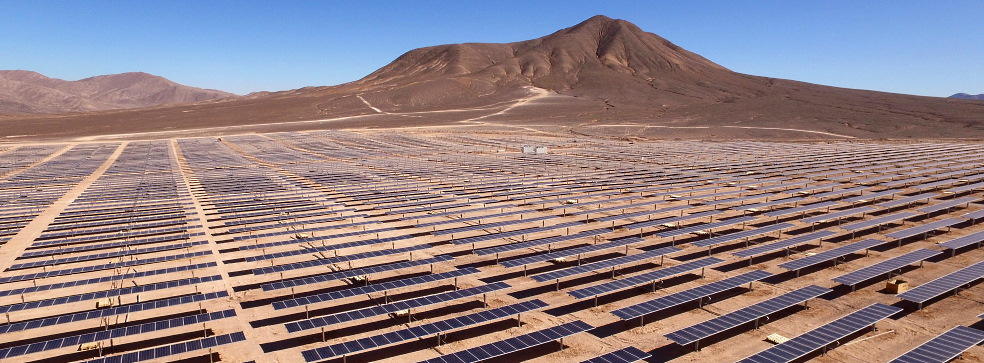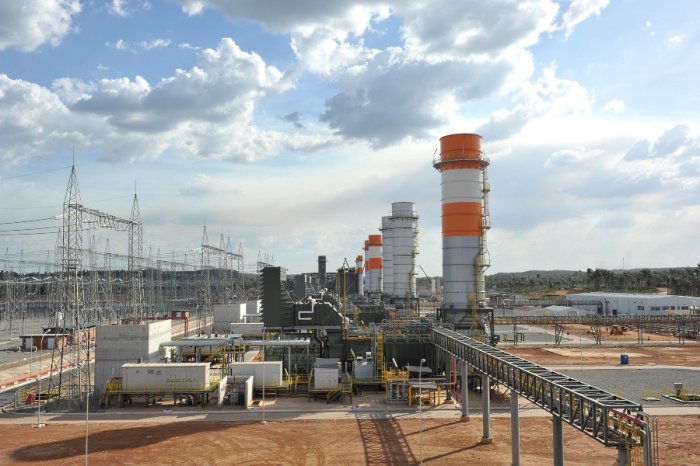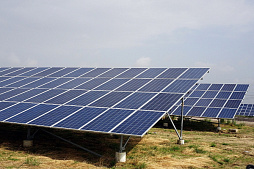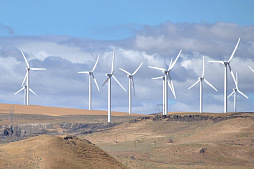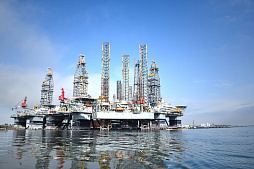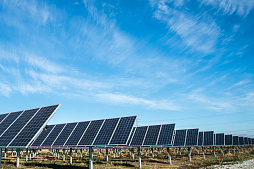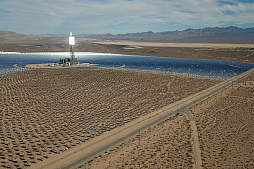To consider an application for financing, fill out the form and send it to us by e-mail along with the project brief, or contact our experts
There are many factors that need to be considered in the context of achieving a balance between the cost and productivity.
Specialists must have the necessary skills and many years of practical experience in the field of engineering design of solar power plants in different parts of the world.
Entrusting the work to experienced professionals, you can be sure of the optimal return on your investment.
The most important aspect of the design of any solar plant is to minimize the cost of electricity.
Detailed analytical work preceding the project allows us to achieve optimal quality and cost.
Informed engineering solutions are the key to the success of any major investment project. We always think about reliability, productivity, as well as optimizing current costs and reducing losses during the operation of a solar power plant.
The characteristics of solar radiation, the location of the object, the angle of the sun – these and many other features must be considered.
Link Bridge Financial LTDA LBFL, together with its partners, offers financing and all types of pre-design studies, economic and technical calculations, the creation of preliminary projects and the development of personalized design solutions.
General layout of a solar power plant
Depending on the conditions of a particular site, engineers develop a general layout of the facility and plan the optimal distance between the rows and key engineering structures.Special computer programs take into account the illumination, the movement of the sun in different seasons, topography, geological characteristics of the area and other factors.
The result of this work will be a model of a solar power plant, which should reflect the distance between the rows of solar panels and their orientation, as well as the most appropriate location of the rest of the infrastructure and access roads.
The goal of engineers at this stage is to ensure the most favorable location of the facility, optimize the tilt angle, reduce the length of cable route, simplify operation and maintenance, and effectively use the solar resource in a particular area.
For example, when choosing the optimal tilt angle, the possibility of natural cleaning by rainwater, shading, as well as the seasonal distribution of radiation and other factors are taken into account.
Shading of photovoltaic modules requires a series of technical calculations taking into account the specific technology (crystalline or thin-film), as well as the configuration of the modules used.
Choosing the distance between the rows requires a balance between shading, the total area of the solar photovoltaic plant, the length of cable routes and electrical losses.
In the case of the construction of solar plants in Europe, the orientation of the modules to the south increases the generation of electricity. In each case, our experts take into account the geographical location, and peak hours of energy consumption to achieve maximum financial benefits.
Modeling power generation using software is an important prerequisite for making informed decisions in the next stages of work.
The choice of technology and equipment for the solar plant
Only modern and energy efficient technologies are used to ensure a higher economic return and the security of your investment.Certification in accordance with IEC (International Electrotechnical Commission) standards is important to us.
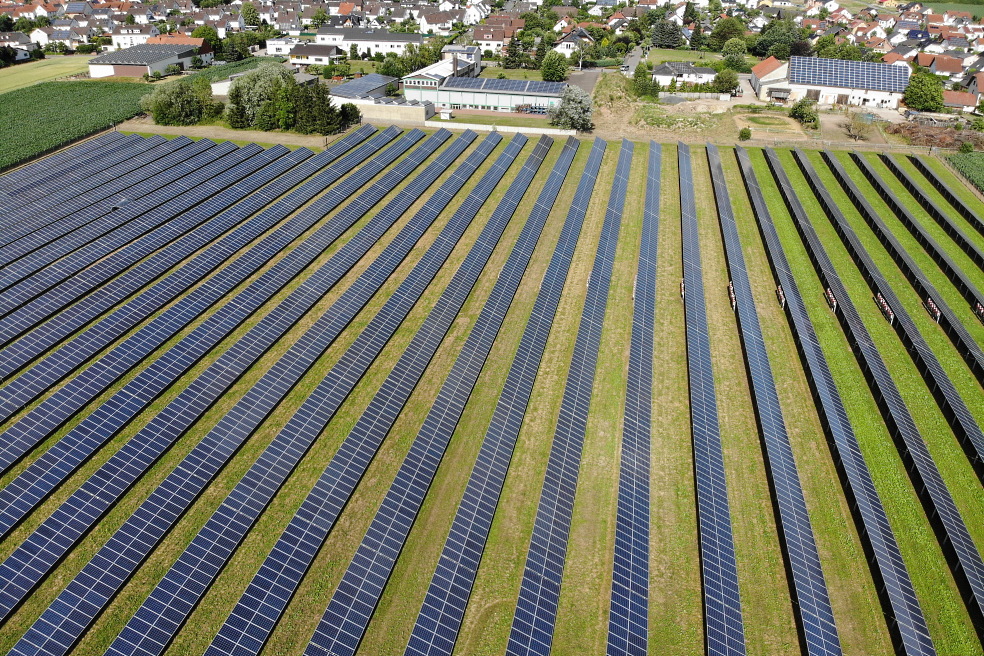
Equipment is selected from trusted suppliers that has proven its worth in other projects around the world. This equipment is capable of withstanding extreme weather conditions and operating loads without frequent maintenance and repair.
Photovoltaic modules selection
The efficiency of the photovoltaic modules of solar power plants is largely dependent on temperature, shading, and a number of other factors.This complicates the technology selection.
Experienced technical consultants are well aware of the properties of various materials, equipment quality, operational features, advantages and disadvantages of each model. We take into account not only the product guarantee and the power guarantee, but also less obvious characteristics that are understood only by professionals.
Unfortunately, it is impossible to get everything at once.
The choice of a photovoltaic module is always a compromise between cost, efficiency, lifetime, etc.
Crystal modules demonstrate high efficiency for 30 years or more. Thin-film technologies have a similar lifetime.
Inverter selection
Each inverter is best suited for a specific project.During the engineering design of solar power plants, specialists select the components of all systems in such a way as to adapt it to a specific application.
The right inverter selection is critical to ensure maximum solar plant performance.
The efficiency of converting direct current into alternating current affects the annual income of the solar plant. This characteristic depends on many factors.
To find the most effective option in terms of cost and effectiveness, experts conduct technical and economic analysis. We take into account climatic conditions, reliability, service life, future costs of maintenance and repair.
The warranty on inverters is about 20 years, subject to regular maintenance and replacement of components. Real world experience confirms the possibility of long-term operation of inverters.
These solutions greatly simplify the installation and maintenance of equipment. All proposed inverters are accompanied by test certificates and comply with international and national standards.
Transformer selection
Solar power plants mainly use grid and distribution transformers.Maintenance costs and losses are the main factors that an engineer must consider when designing an object. The choice of transformer affects the profitability of a solar photovoltaic plant.
As with other components, we take into account not only the rated power and basic characteristics, but also our own experience in assembly and maintenance. If the transformer is correctly selected, installed and serviced, the investor can expect high efficiency of the plant as a whole.
For example, amorphous transformers have minimal electrical losses under no load conditions. That is why this type of transformer is suitable for facilities with long periods of no load.
In general, the service life of modern transformers is about 10 years, although this period varies significantly depending on the specific type and manufacturer.
Tracking systems selection
The location of the solar power plant affects the orientation, angles and distance between the PV modules. In the northern hemisphere, the modules should be oriented south, and in the southern hemisphere, their surfaces face north.Effective solar tracking systems maximize power generation and project profitability. Computer-controlled systems offered by our company can be used to optimize the angle and orientation in accordance with the specific location of the site.
Warranty for tracking systems usually does not exceed 8-10 years, depending on the quality of production and materials. Such components require frequent maintenance because they contain numerous moving parts.
The choice of mounting structures depends on the operating conditions. For example, salty and moist sea air can threaten metal parts, which requires the use of corrosion protection. In general, these components last for 20-30 years or more.
Whatever the goals and scope of your investment project, the vast experience and knowledge of the engineering team will guarantee your success. Anytime, anywhere.
Solar power plant design
The electrical design of a solar power plant requires an individual approach, since each project and each location has certain limitations.Our experience says that there are no universal solutions that are equally suitable for every investor.
Electrical engineering design services include:
• DC systems: arrays of PV modules, DC cable, connectors, junction boxes, electrical safety devices and grounding.
• AC systems: AC cable, AC switchgear, electrical safety devices, grounding, substation with transformers, supervisory control and data acquisition system.
• Equipment for grid connection, etc.
At this stage, it is important to take into account the individual requirements of a particular project, national and international standards, safety rules and other factors.
Structural engineering services
The solar power plant requires the construction of infrastructure facilities that allow the operation and maintenance of all components of the system in accordance with current requirements.The solar station should include special rooms for inverters and transformers, an isolated office building, a room for employees, workshops, communication devices, station monitoring systems, security systems and other objects.

Engineers use their experience and professional knowledge to optimize the location of buildings and structures.
It is important to identify suitable areas for construction so that buildings do not interfere with the operation of the photovoltaic modules and are available for maintenance.
All rooms must comply with construction standards and regulations. Many facilities require strong reinforced concrete foundations, waterproof containers, forced ventilation systems and partitions to prevent flooding of electrical equipment.
Design of security systems and monitoring systems
Building a solar photovoltaic plant is a huge investment.Therefore, the safety of property is one of the priorities for engineers.
Unfortunately, sometimes expensive photovoltaic modules, cables and other compact equipment are stolen by criminals. To prevent such situations, we offer effective engineering solutions, including automated safety guards, sensors and cameras.
Security systems design includes:
• Plant fencing, which is usually an inexpensive and reliable steel wire mesh construction around the perimeter of the facility.
• Video surveillance systems, including thermal cameras and night cameras with infrared illuminators, which are currently installed in almost all solar power plants.
• Special software for the analysis of video surveillance data, which reduces the risk of false alarms of the security system.
• Sensors around the perimeter of the facility, including microwave sensors, magnetic sensors, as well as motion sensors and other technologies.
• Other safety systems that ensure the smooth operation of the solar plant and the safety of expensive property, including special bolts, warning devices and fiber optic systems.
Finally, a solar power monitoring system is a key component of modern facilities. A computerized system is critical for analyzing performance, troubleshooting, maintenance planning, minimizing downtime, and optimizing performance.
Together with our partners, we have extensive experience in financing and designing complex multi-component monitoring systems that ensure reliable operation of the plant in any conditions.
To learn more about the solar plant engineering services, contact us through the feedback form on the website.



